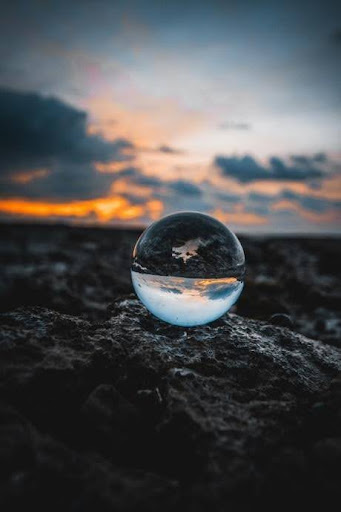Shae: I know that patterns are inherently ways of understanding the world. I would like to think that the simple shapes and metaphors of pattern thinking can offer a common language, a common ground to bridge across difference and diversity. We need a language of concepts and terms to be able to think and talk about difference in a way that is not judgment laden. And also, as a way of considering the possible.
Alexander: Right. Then you get into what Stuart Kauffman talks about as the adjacent possible, which moves us into the liminal domains of taking divergent action to engage with what might be possible, to stretch our experience beyond what we are all used to. If I used my left hand instead of my right hand to pick up something, my reality would split off in a different direct and my possible future would change. Things would be different if we were just able to access the adjacent possible, to stretch into it. Contemporary alternate realities collapse into manifest experience depending on the slightest difference in the choice arrays with which we engage. The probability space associated with these alternative possibilities result in the realities we experience being expressed rather than in other ones. It’s fascinating to think about what small tweak in our thinking, behaving, or expressing would have caused those other realities to manifest rather than the ones we are experiencing.
Shae: An interesting concept, the adjacent possible. It opens up life beyond what we think we are, what we think our lives are, and what it is that is possible for us. It reminds me of a Learning to Learn workshop I attended many years ago, before I went to university as an undergraduate student. I was aware that I had some habits of thinking about my own capabilities. The workshop was based on getting us all to use our bodies differently than we usually did. As you said, using the other hand, moving differently. It was often uncomfortable, but it opened up the space of the possible for new learning. Us humans do tend to think life is stuck in its current groove. And many of us would like to see engagement with the adjacent possibles of change and evolution towards futures of equity and thriving.
Alexander: You know, I think Kauffman’s adjacent possible can go even further. It relates to the idea of many parallel realities that may co-exist simultaneously, that you can imagine as being potentially real realities. And in imagining them, it can create an evolutionary attractor, something that can help us steer from our current groove along the walls of those adjacent possible realities by helping us be more porous and open to them. By imagining into the adjacent possible, we can reach through liminal space into futures that make us more human, more in healthy syntony with life.
I don’t know how much Stuart Kauffman has gone into the idea of temporal adjacent possibles, and what that might mean in terms of informing of our being and becoming. But I think that just as we can be informed by the adjacent possibles of space, we can sense into the adjacent possibles of time. In society, when we talk about how one generation is different the next, we are actually comparing temporally distinct cultures. But we don’t often think of one generation being a temporal expression of the adjacent possible of another generation.
Shae: What we think is possible certainly influences what emerges by influencing our actions and, as you say, by generating complexity attractors. I’ve been thinking about teaching history from generational connectedness, rather than as it is often taught now as a linear progression that people were simply caught up in. And yes, including the different ways of thinking and ways of knowing among various generations may inspire us to consider the evolution of thinking, of knowing, and of the possibilities for humans to evolve into in the future. Considering future humans and other species may open up and augment our sense of what is possible.

Image by Louis Maniquet, royalty free by unsplash
Kauffman, S. (1993). The Origins of Order: Self-organization and Selection in Evolution. Oxford University Press.
